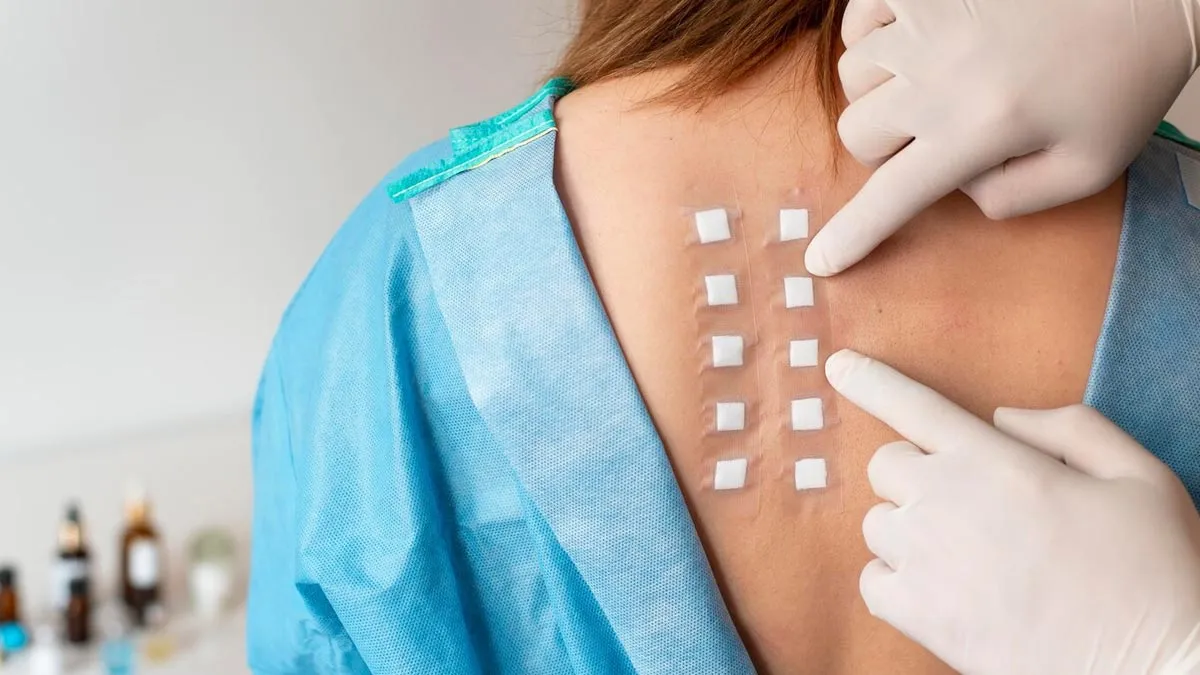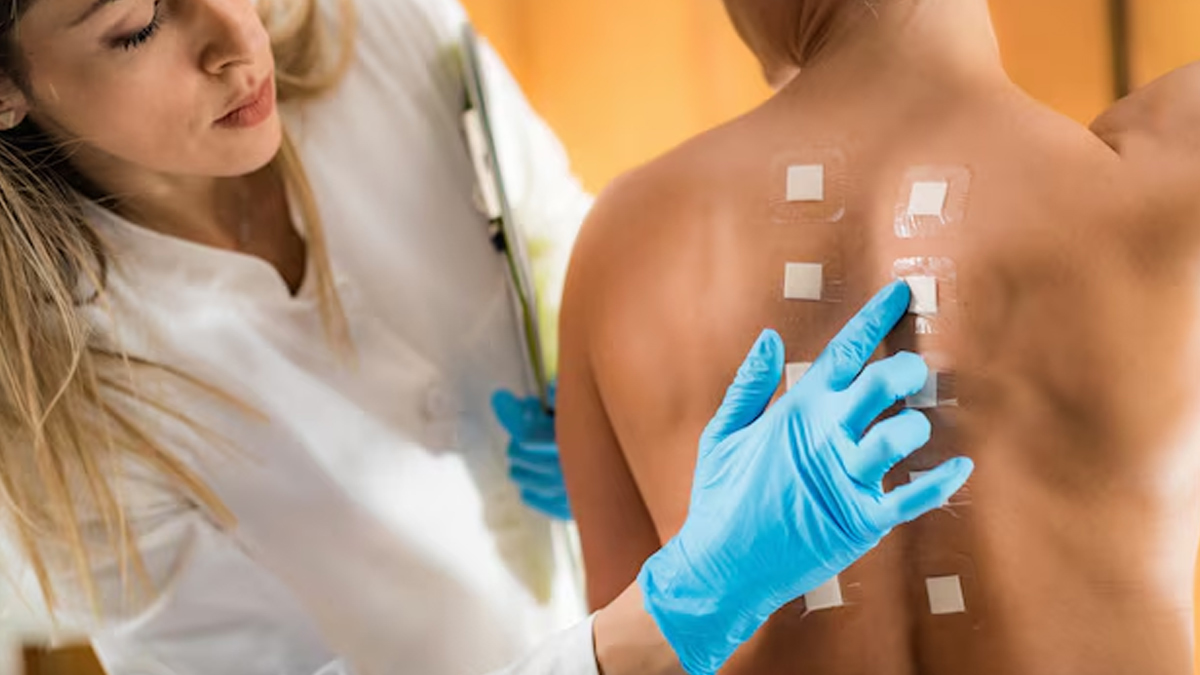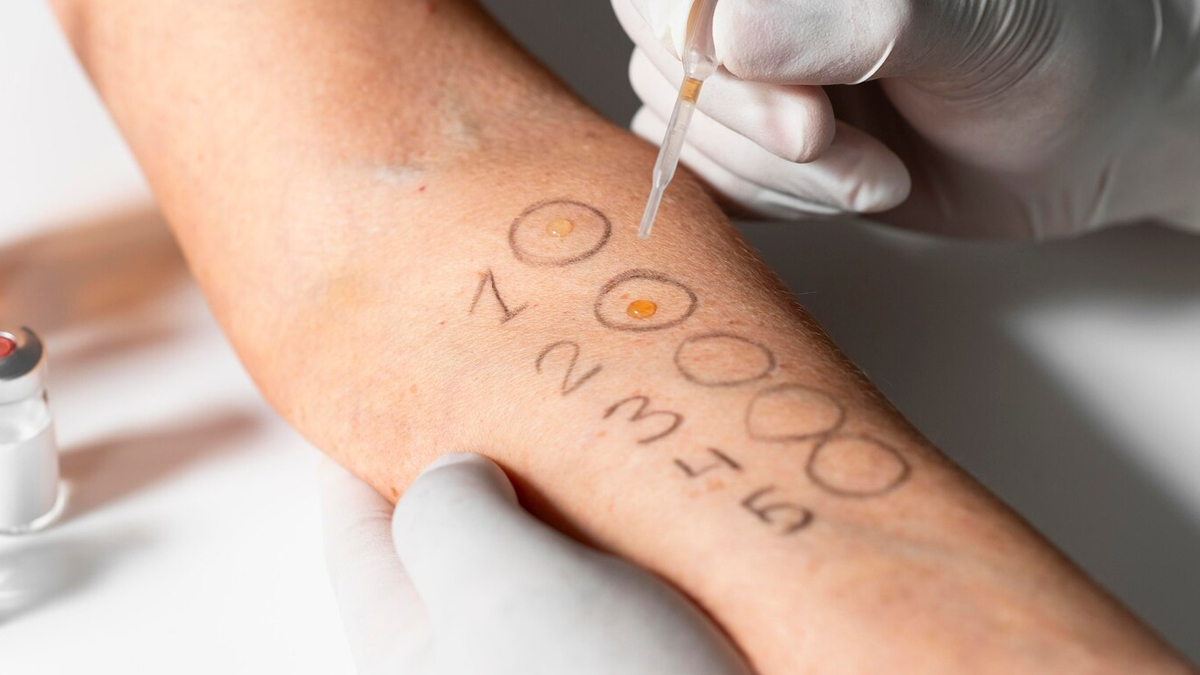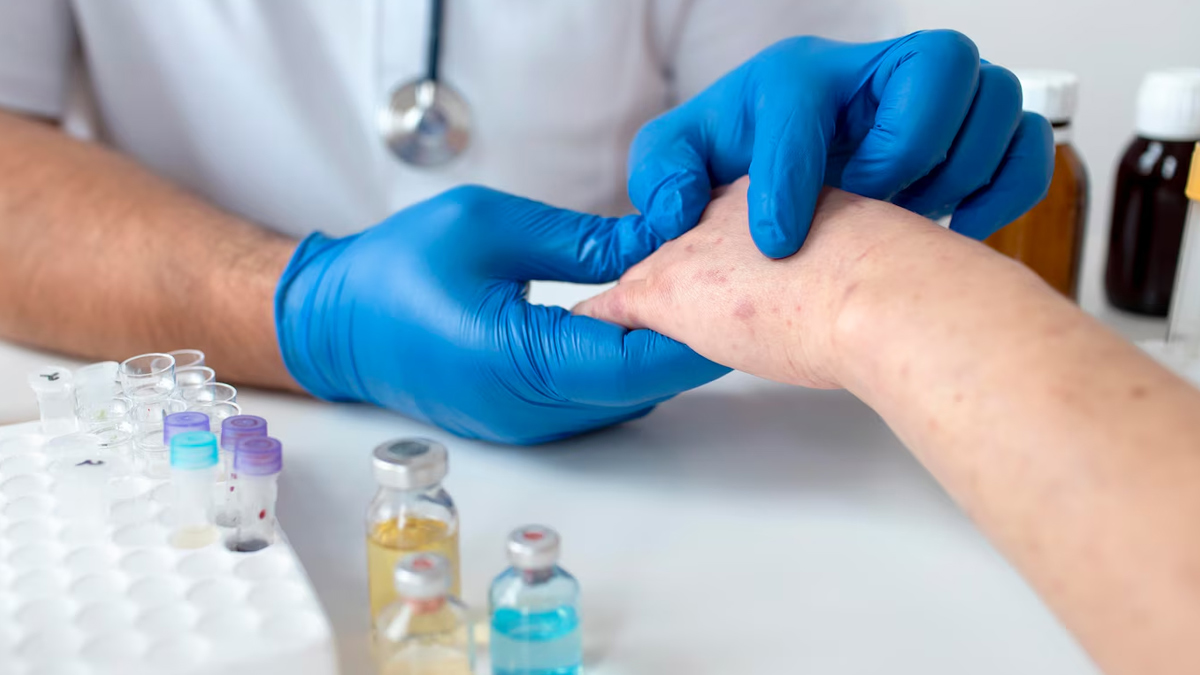
Allergies are common and can be triggered by anything from certain foods and chemicals to dust or pet dander. While some people discover their allergies only after an unexpected reaction, deliberately exposing yourself to potential allergens just to find out is risky and can be dangerous. Allergic reactions can range from mild to severe; sometimes, they can also lead to hospitalisation and death.
Table of Content:-
Therefore, a safer and more accurate way to identify allergies is through a skin patch test, a method where small amounts of suspected allergens are applied to patches placed on your skin. This process allows doctors to observe your body’s response without the dangers of uncontrolled exposure, helping pinpoint the exact substances you’re allergic to.
Also Read: Atopic Dermatitis Vs Contact Dermatitis: Expert Explains How To Differentiate Between The Two
What Is A Skin Patch Test?

A skin patch test is a medical procedure used to identify substances that cause allergic contact dermatitis, an inflammatory skin reaction.
It involves applying small amounts of various potential allergens to the skin, typically on the back, and then assessing the skin's reaction after a period of time, usually 48 hours, to see if any of the substances cause irritation or a rash.
According to Dr Priyanka Kuri, Consultant Dermatologist, Aster Whitefield Hospital, Bengaluru, patch testing involves the use of a wide panel of potential allergenic substances that can cause allergic skin reactions. Some of the more frequently used common substances include the following:
- Fragrances (perfume, deodorant, soap)
- Preservatives in a cream or shampoo
- Nickel (metal on jewellery or watches) or cobalt
- Hair dye or other salon products
- Rubber and latex (gloves, shoes or waistbands)
- Detergent and fabric softener
- Cosmetic ingredients – parabens, lanolin, etc.
Your physician can also have you patch test certain tailor-made substances as well that consider what you presently use or use for work (such as your own shampoo, skin moisturiser, or work chemicals).
Also Read: Sensitive Skin? Here’s Why Hypoallergenic Skincare Might Be the Answer
Signs You Should Get A Skin Patch Test

Dr Kurishares, "If your skin is graphically itching with rashes, redness, dry patches, or swelling for no clear reason, it may be worth investigating a patch test."
It is particularly helpful if you can reply ‘yes’ to any of the following:
- Your skin reacts to dermatological skincare, hair care, or other cosmetic products.
- You have ongoing eczema or dermatitis that does not respond to normal treatment.
- You have a rash immediately after using a new soap, detergent, metal jewellery (e.g., earrings), or make-up products.
- Your skin flares up for no particular reason.
So, if it seems like your skin ‘just acts up’ for no apparent reason or ‘takes a turn for the worse’ often, and you have no idea what is causing it, a patch test will tell you what you're allergic to so you can avoid it in the future.
How Is A Skin Patch Test Performed?

A skin patch test is a non-invasive way to identify allergens. Here are the steps that are followed in performing a skin patch test:
- A dermatologist applies small amounts of known, common allergens (the triggers of allergies for many people) to small patches.
- They will then place the patches on the skin, usually on the back or upper arm, with medical tape.
- Patients will then be asked to keep the patches on their skin for approximately 48 hours, without showering or excessive sweating.
- After two days, the doctor will remove the patches and evaluate the skin for a reaction (i.e., redness, bumps, itching and/or swelling at the site).
- To confirm delayed reactions, another evaluation will often be needed at Day 4 or 5.
Can Skin Patch Tests Be Painful?
According to Dr Kuri, the patch test is completely innocuous, and there are no needles or injections involved. "If your skin does react to something, you might feel a little sore and itchy for a few days at the patch's site, and the only thing you might feel during the patch test is a little irritation or itching."
If you are allergic, the patch can become red or slightly elevated like a bug bite but is mild and usually transient. It is no more uncomfortable or invasive than a sticker test.
How Long Do The Results Take?
Normally, patch test results will take 48-96 hours to be completely clear. The first reading will usually be after two days, and the last reading will be after 4-5 days.
If your skin has redness, bumps, swelling, or itching on the patch site, you likely have an allergy to that substance. The more prominent the reaction is, the more sensitive your skin is to that substance.
These results will help your dermatologist develop an individualised plan for you – what to avoid, how to help with flare-ups, and what products or fabrics are safe for you going forward.
Also watch this video
How we keep this article up to date:
We work with experts and keep a close eye on the latest in health and wellness. Whenever there is a new research or helpful information, we update our articles with accurate and useful advice.
Current Version
